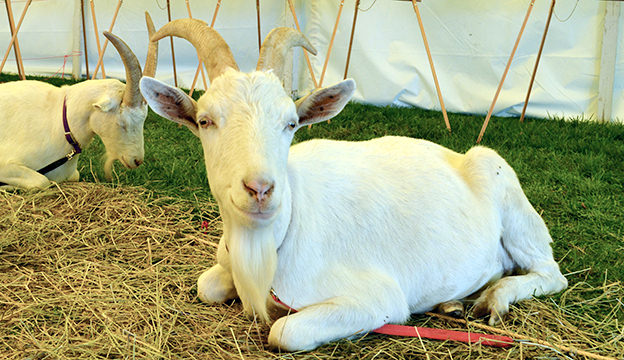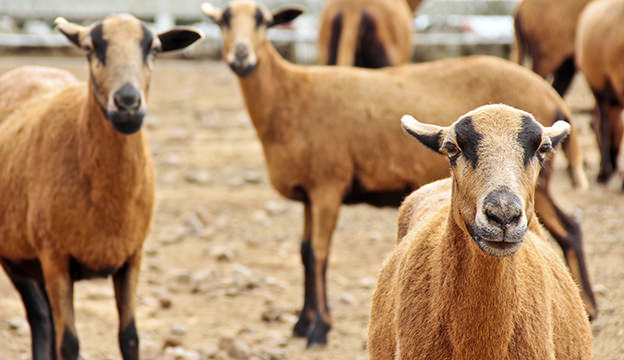Use: The versatile Pygora grows one of three types of fleeces for the spinner’s pleasure. Type A, the Angora type, dangles in long, lustrous, curly locks. This fine mohair can reach six inches in length. Type B blends the Angora mohair with the soft Pygmy undercoat, called cashmere. Finally Type C, the Cashmere type, is a short, fine, non-lustrous fiber of one to three inches. According to the PBA, Pygora fleece has little lanolin, so should not be overspun, and it mixes well with wool and silk. One Pygora will yield 6 ounces to 2 pounds of fiber per shearing.
History: The Pygora is a relatively new breed developed by Katherine Jorgensen of Oregon. Aiming for an animal that would yield a fine spinning fiber, she crossed a registered Pygmy goat with a registered silky-fleeced Angora goat. This mating produced F-1 generation hybrids, which when bred together resulted in the true Pygora. The Pygora Breeders Association (PBA) organized in 1987, and according to the association, the breed’s popularity has steadily increased since that time.
Conformation: The medium-sized Pygora is a graceful, muscular, and balanced goat, with does standing on average 22 inches at the withers and the robust bucks averaging 27 inches at the withers. Females weigh 65 to 75 pounds; males, 75-95 pounds. All Pygoras must have fleece, and they can display any of the wide range of colors exhibited by Pygmy goats. Patterns are divided into caramel, agouti, black, and white. However, markings typical of other recognized goat breeds are not accepted for registry. Pygoras possess horns, and can be shown with or without them. Raisers characterize the breed as curious, friendly, and easy-to-handle. The does generally have few kidding problems, producing lively young.
Special Considerations/Notes: Type A goats must be shorn of their luxuriant fleeces, usually before kidding time in late winter (many are sheared twice a year). Type B goats can be shorn, combed or plucked. The cashmere Type C goats may be shorn or combed. Raisers usually pick or comb fleeces in the early Spring, when the goats start shedding. With fleece goats, it’s important to take steps to keep their coats free of vegetation and hay, such as avoiding the use of elevated feeders and preventing access to fleece-snagging brambles and weeds.













